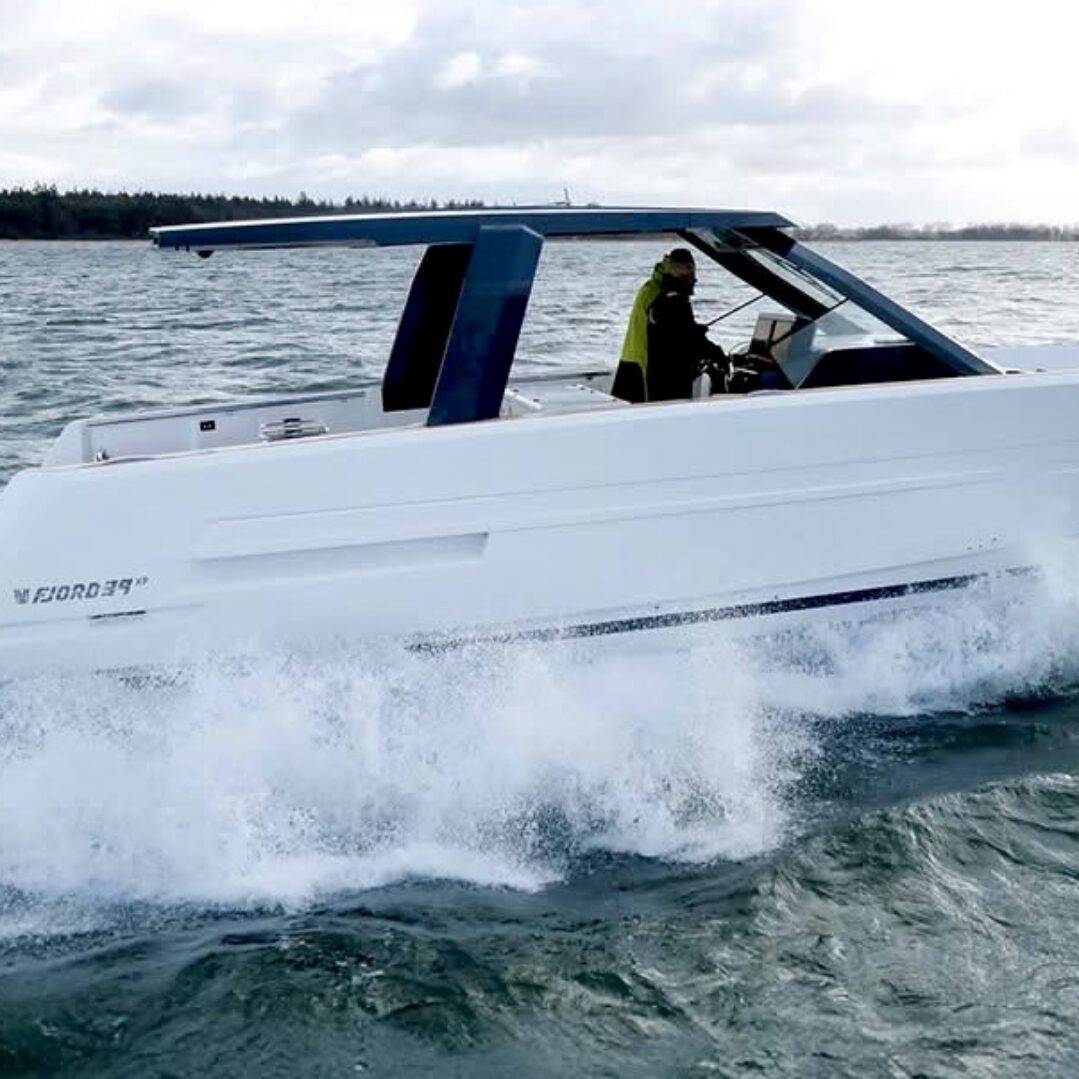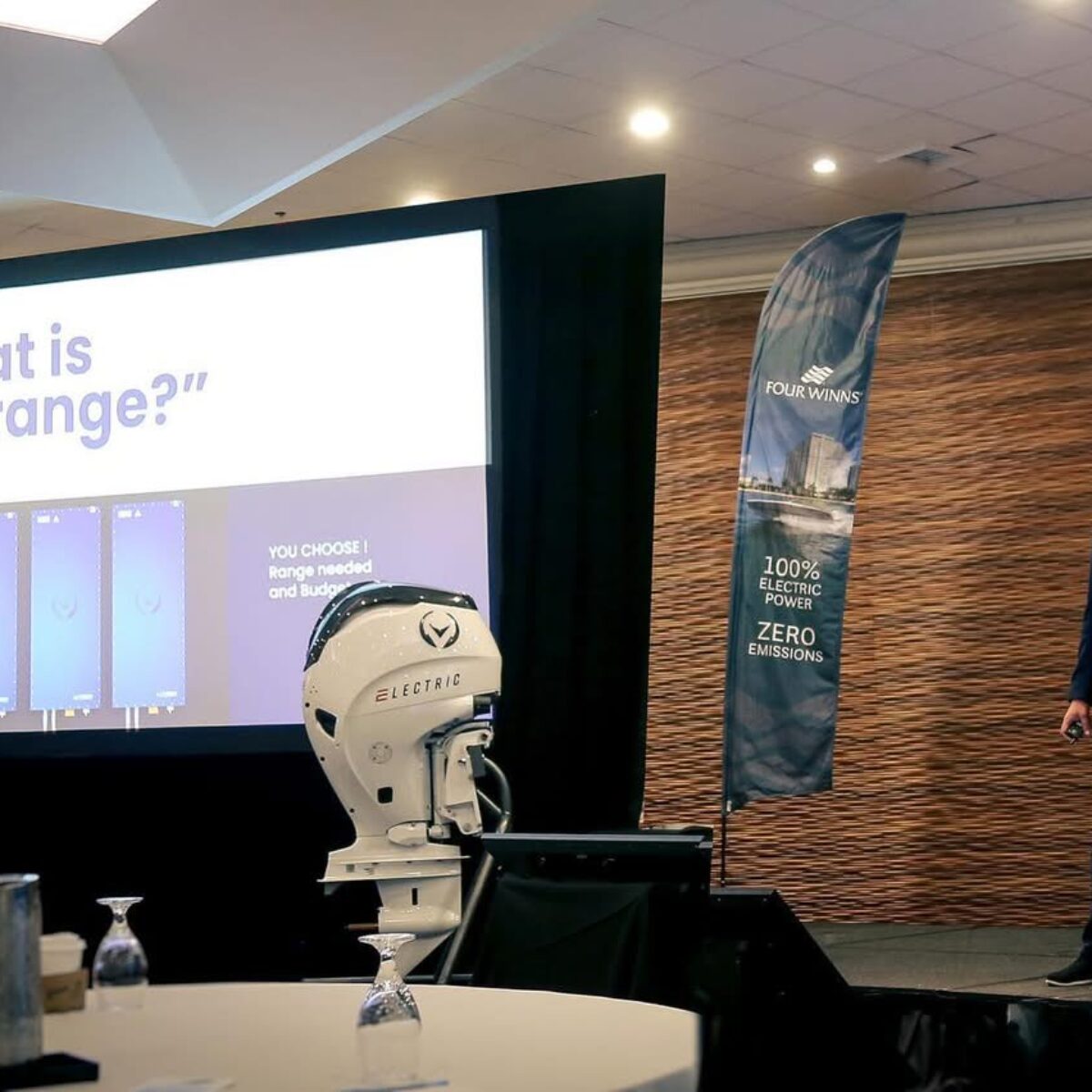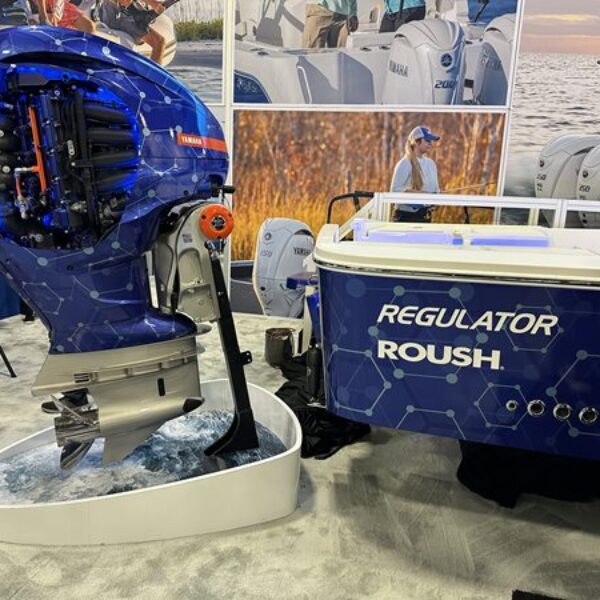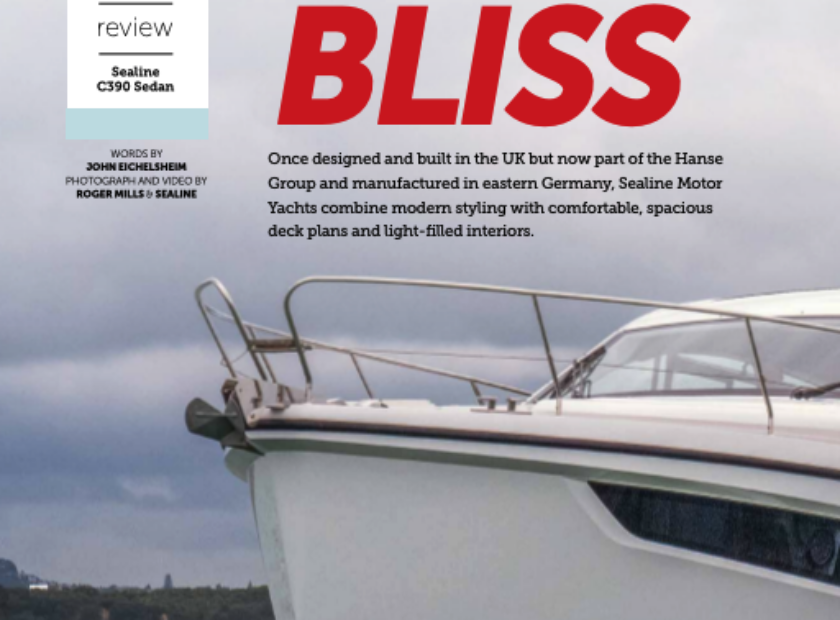Petrol outboards still rule the market, but diesel, electric and even hydrogen units could be on our transoms in the future.
Engine technologies are undergoing significant evolution, with the changes filtering through to the marine market where the pace of change has been particularly noticeable in the outboard category.
Indeed, as conventional marine engine technology has advanced over the last decade it’s really been outboards that have morphed into new forms. The evolution has resulted in engines that are more powerful, fuel-efficient, and smoother than their predecessors.
While the vast majority of outboards on the market are still petrol, diesel and electric alternatives are now available and this year the world’s first hydrogen-powered outboard for recreational boats was unveiled.
Petrol perseverance
Windcraft’s fast and versatile Fjord and RYCK centre-console sports day boat brands mainly tap the power of Mercury’s well-known and highly regarded Verado range from 250hp to 600hp. Common traits across the range are impressive tech, ease of use, good mid-range economy, high torque at the low end, quiet, efficient and coupled with low weight making the Verados the benchmark in their respective classes.
It should also be noted the Verado range has been specifically designed for saltwater in single and multi-engine applications for centre-consoles including express cruisers and fishing boats where Owners want lots of quiet power. Because of Mercury Marine’s proprietary aluminium alloy, all Mercury products are generally considered to have the best anti-corrosion system on the market.
Launched a few months ago, the new Fjord 39 XP is equipped with dual 400 HP (5.7L) V10 Mercury Verado engines. Reviews emphasise the big Verados’ quietness and smooth power delivery.
According to boatsales.com.au “the 400hp Mercury V10 Verado is a gift that keeps on giving. Strong at any part of the rev range, it’s going to be a formidable addition to the transom of the boats fortunate enough to wear it.”
Petrol is the dominant fuel variant and will be for some time yet. Any petrol outboard will be quieter, lighter, less bulky and cheaper than its current diesel cousin.
Diesel debate
Advocates of the new era diesel outboards are quick to point out their perceived advantages over their petrol counterparts. The main ones cited are better fuel efficiency, more torque and a longer service life.
Back in February UK-based Cox Marine released the world’s first 350hp V8 diesel outboard at the Miami International Boat Show. Built on the robust V8 architecture, it continues the legacy of the company’s ground-breaking 300hp twin turbo V8, launched in 2018.
The new 350hp engine is based on the same twin-turbo 4.4-litre block but includes an increased turbocharger capacity along with “other alterations” over and above the now entry-level engine and will power ever higher-displacement recreational and commercial boats.
The order book for the 350 opened in August and to date x units and Cox believes its latest offering closes the gap with petrol in terms of performance, convenience, time, and economy.
Reviews like this from Boating have flagged the Cox Marine engine may win over many diesel doubters:

“My preconceived notion of a diesel outboard was totally wrong. I loved the Cox 350—loved its power, its economy, its thoughtful design and, of course, that it’s helping save the world.”
As the article explains diesel is proving its worth with rescue services and commercial operators. The US Coast Guard installs Cox Marine diesels on its Boston Whaler 37s, due to their quick-revving qualities with far lower fuel consumption (claimed up to 30 per cent), as well as nearly double the torque of comparable petrol outboards.
The Cox 350 also boasts a swag of green initiatives headed by low emissions, up to 36 percent less CO2 than gas outboards. It can run on hydrotreated vegetable oil, a synthetically produced fuel that is processed using renewable waste liquids without using petroleum resources. It even runs on jet fuel, available everywhere in the world.
Pros:
- Fuel efficiency, roughly 30% less fuel used than comparable petrol outboards.
- Operational range, roughly 70% increase compared to petrol outboards.
- Reduced operating costs.
Cons:
- Price, considerably more expensive.
- Weight, diesel outboards are heavier than comparable petrol outboards. This could reduce the top speed of the boat when considering comparative power output.
- Noise and vibrations, although the technology is improving, diesel engines still produce more vibrations and noise.
Electric dreams and reality
The future for the replacement of the internal combustion engine seems to be electric.
While increasingly stylish electric vehicles (EVs) are everywhere on the roads, the marine sector seems to be lagging due to challenges around product availability, cost, charging infrastructure and a relatively slow take-up among consumers, at least in Australia and New Zealand.
But there are some interesting powerplants now available capable of propelling
boats up to nine metres such as the E-Motion 180E, designed to replace any standard 180hp petrol engine.
Produced by Canadian based Vision Marine and launched in 2021 amid hype of the “world’s most powerful electric powertrain”, the E-Motion 180E weighs in at 180 kilograms, slightly less than the approximate 215kg of a 200hp Mercury outboard.
However, the battery bank that is sold as part of the 180E powertrain package (which also includes a BMS- battery management system-charger, monitor, throttle controls and various bits to connect it all together) will add a hefty 400kg to the vessel. This will be offset by the removal of fuel tanks but still needs to be considered.
Promising an exciting dose of electric performance is Evoy from Norway. Its Storm 300+ was unveiled in 2023 with the fanfare of the “world’s first 300hp electric outboard”.
The motor itself is finished in matte black and with a distinct forward, aggressive stance, impersonating a conventional engine by featuring an upper cowl and what appears to be a drive leg. Below it is a typical anti-cavitation plate, a torpedo housing the prop shaft, and a skeg.
Evoy is definitely at the forefront of development of electric outboards, also offering a 120hp Breeze variant which it says is ideal for 15 to 25 ft boats for single installations and 23 to 30 ft for double installations.
The company’s Storm 300+ unit is the showpiece, capable of single installation in 25 to 35 ft boats, and 30 to 40 feet for double installation. Real life testing teamed with a centre-console sports day boat has apparently yielded some admirable numbers.
The 25ft test boat with the Storm 300+ on the back clocked a top speed of 54 knots with a respectable cruising speed of 25 knots. Range was limited – from 25 to 66 nautical miles – but you can choose to step up to either a 252kWh or range-topping 378kWh battery pack. However, that comes with significant cost, the top-of-the line package in the vicinity of AUD$400,000.
See the Storm 300+ in action here on the transom of a Raven RIB:
In its basic version the Storm is about $120,000, making it about as expensive as Mercury’s 600hp V12. There’s the downside of being an early adopter but the tech is impressive and will only be further refined and improved.
Hydrogen horizon
Earlier in the year Yamaha revealed a prototype V8 outboard engine that may one day burn hydrogen as a fuel rather than petrol, and showed a boat kitted out with the hydrogen storage tanks that will feed it.
The prototype “H2” engine, based on a 450hp Yamaha XTO Offshore outboard engine, looks surprisingly conventional apart from what looks like a new fuel rail and injector system suggesting that it will burn hydrogen gas instead of petrol when it hits the water for the first round of trials of the technology meant to be underway soon.
Helpfully Fishing Monthly caught-up with a Yamaha expert at this year’s Sydney International to discuss the prototype engine:
Hydrogen is very different to other fuels in that it needs to be stored at very cold temperatures – in its liquid form it needs to be kept below -253 degrees Celsius – and at very high pressure.
However, a hydrogen bowser can refuel a tank in a very similar process to filling a petrol tank, although with a few extra precautions added to the process.
Just what type of outboard(s) most of us will be using on our day boats 20 years from now is a difficult call. Regardless of its fuel, the go to engine of 2044 will have to meet high performance, reliability, safety and emission standards, as well as factoring in cost. A more immediate question for any boat owner is are they willing to invest a larger sum of money in the new technologies to be ahead of the curve.
More information the Fjord range: windcraftyachts.com/fjord
More on the RYCK 280: windcraftyachts.com/ryck






















